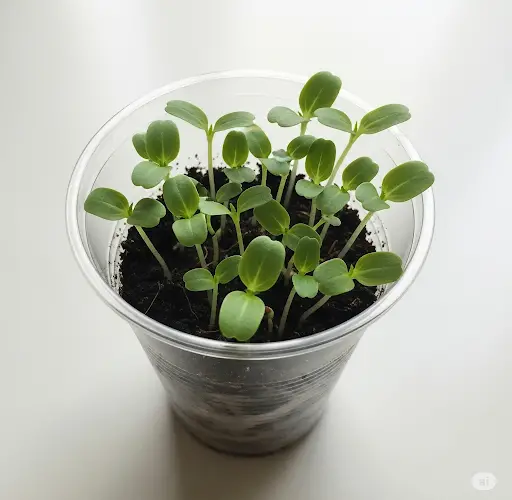Healthy seedlings are the foundation of a productive garden. Whether you’re growing tomatoes, peppers, cucumbers, eggplants, or even flowers, how your seedlings develop in the early stages determines the strength, resilience, and productivity of the mature plants. One of the biggest challenges gardeners face is “leggy” or weak seedlings — tall, thin, and easily bent stems that can’t support their own weight.
Fortunately, there’s a simple and inexpensive trick to encourage seedlings to grow short, thick, and strong. By adding just one spoonful of this natural booster to the soil, you can stimulate robust root growth and ensure that your young plants grow compact and powerful — the ideal structure for transplanting and long-term garden success.
The Problem with Weak Seedlings
When seedlings grow too quickly in height without adequate light, nutrients, or root development, they become thin and fragile. These leggy seedlings often:
-
Struggle to hold themselves upright
-
Are prone to disease and breakage
-
Have underdeveloped root systems
-
Produce fewer fruits and flowers later on
The goal for any gardener is to grow stocky seedlings — low to the ground with thick stems and dark green foliage. These plants transplant better and are more resilient in the garden.
The One-Spoonful Solution That Transforms Seedlings
The key to transforming fragile seedlings into sturdy, short-stemmed plants lies in improving their root nutrition early. This method uses a well-known kitchen ingredient that works wonders for young plants: wood ash.
Ingredient:
-
1 tablespoon of sifted wood ash (per plant)
Wood ash is a natural fertilizer that contains essential nutrients such as potassium, calcium, phosphorus, and trace elements that promote healthy root growth and stem strength.
How to Use:
-
After your seedlings have developed at least one set of true leaves, prepare to apply the ash.
-
Lightly moisten the soil around the seedling.
-
Sprinkle 1 tablespoon of wood ash around the base of each plant (but not touching the stem directly).
-
Gently mix it into the top layer of soil and water lightly again.
This simple treatment is safe for most vegetable and flower seedlings. It gives them a slow-release nutrient boost without overwhelming their delicate systems.
Why Wood Ash Works
Wood ash is a traditional gardening amendment with many benefits:
-
Rich in potassium: Essential for strong cell walls and stem thickening.
-
Contains calcium and phosphorus: Supports root development and nutrient transport.
-
Neutralizes acidic soil: Slightly raises pH, which can improve nutrient availability in overly acidic growing mixes.
-
Improves soil structure: Especially when used in moderation in seedling trays or containers.
These nutrients help encourage not just top growth, but deep root systems and thick, compact stems.
Best Practices for Strong Seedlings
While the wood ash spoonful is a powerful helper, your seedlings still need the right environment to reach their full potential. Combine this method with good seed-starting practices:
-
Use strong lighting: Seedlings need 12–16 hours of bright light daily. Weak light leads to stretching.
-
Avoid overwatering: Let the top layer of soil dry slightly between waterings to prevent rot.
-
Provide airflow: Gentle ventilation helps strengthen stems and prevents fungal problems.
-
Don’t over-fertilize: Too much nitrogen encourages tall, leafy growth at the expense of stem thickness.
-
Transplant at the right time: Once your seedlings are short, sturdy, and have a few true leaves, they’re ready for their new home.
What Seedlings Benefit Most from This Method?
This spoonful of wood ash can be applied to almost any garden plant at the seedling stage, but it’s especially effective for:
-
Tomatoes
-
Peppers
-
Cucumbers
-
Eggplants
-
Zucchini and squash
-
Cabbage, kale, and broccoli
-
Marigolds, zinnias, and other annual flowers
Just be cautious when using on acid-loving plants (like blueberries), as wood ash raises soil pH.
How Often Should You Use It?
-
Once per seedling tray is usually enough during the early stages.
-
If transplanting to larger containers, another light application can be made 10–14 days later.
-
Do not use more than 1 tablespoon per plant — a little goes a long way.
Final Thoughts
A strong garden begins with strong seedlings. By applying just one spoonful of wood ash under each plant, you give them the structure they need to grow into healthy, fruitful producers. This method is simple, natural, and time-tested — and it works wonders across a wide range of crops.
Whether you’re growing vegetables for food or flowers for beauty, start with thick, low, and sturdy seedlings — and you’ll enjoy healthier plants and bigger harvests all season long.



